Motorola Edge 40 review

Competition
The Motorola Edge 40's market price of €500-600 for an 8GB/256GB version places it in something of a premium midranger segment, and it's not going to be an easy sell. Big-name options are top of the list, coming from both Samsung and Google, and upstarts like Nothing can provide a compelling alternative, too.

Let's start with a Galaxy. The A54 can be had for under €450 (for a 6GB/256GB spec), and that's some significant savings compared to the Moto. The one major trade-off will be performance - the Edge 40 is way more powerful, particularly in the GPU department. The rest is more complicated - camera performance is mostly a toss-up, the Moto's faster charging somewhat offsets the Galaxy's somewhat better battery life, the A54 has a microSD slot, and the Edge 40 counters with wireless charging. The Galaxy should be getting four years of OS updates vs. the Moto's 4, but it's chunkier and heavier. We reckon the Galaxy is a way better deal, though the Moto has its strong points here, the main one being the SoC.
The Edge 40 loses its performance edge against a Pixel 7a, however. Equipped with the Tensor G2 chip, the 7a is as powerful as Google's flagship, and while the G2 may not be looking good against other top-tier chips, it certainly has an advantage over the Moto's Dimensity, especially for gaming. That's where the Pixel's 90Hz display may be less than ideal, however. The 7a's smaller screen doesn't make it any more compact than the Moto phisycally, and it's actually noticeably heavier too. The Moto charges some three times quicker and likely lasts longer (we haven't been able to test the 7a's endurance), but the Pixel would be a better cameraphone, we reckon. It helps that it's cheaper too, at around €510, albeit for just 128GB of storage.
The Nothing Phone (1) is another option, and it's also more affordable than the Edge 40. It will get you slightly better battery life and a superior ultrawide camera. It doesn't charge as fast, and isn't as water resistant as the Moto, though, nor is it a match for selfies. The unique Glyph LED back can be a major selling point to the right buyer, too.
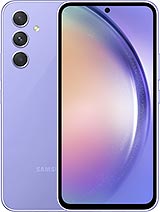
![]()
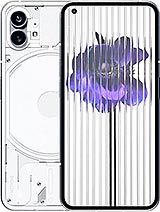
Samsung Galaxy A54 • Google Pixel 7a • Nothing Phone (1)
Also cheaper is the Xiaomi 13 Lite, going for some €400. It's closest to the Moto's size and weight of this bunch, so in a way that makes it more appealing than the others. It loses a few points for its single speaker, lack of wireless charging, older Android and lesser water resistance (just IP53). Then there's the battery life and performance, which both fall slightly short of the Edge 40's. Overall, the Edge 40 is the more complete package by a pretty wide margin, but it does come at a premium.
And while we're still on that 'compact' tangent, perhaps an Xperia 10 V could pique your interest - it's actually even more pocketable than the Edge 40. The Moto's chipset is vastly more powerful, though the Xperia counters with almost ridiculously good battery life - that divide alone should be able to settle it, perhaps. The Xperia is challenged in the video recording field (capped at 1080p), charges at a glacial pace, and has what has to be the only 60Hz display left in the industry.
Finally, you might be inclined to consider another Moto - the Edge 30 Fusion. It's got two key advantages over the Edge 40 - a beefier chipset and, several months into its life, a discounted price. The Edge 40 counters with IP68-rated dust, water resistance, wireless charging, and battery life improvements, charging speed, and low-light photography. We'd say the new model is the better option.
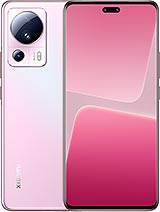
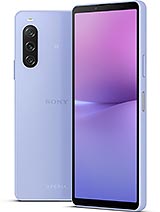
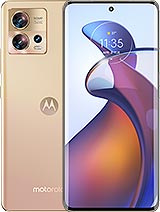
Xiaomi 13 Lite • Sony Xperia 10 V • Motorola Edge 30 Fusion
Verdict
The Edge 40's price may have you raising your eyebrows at first glance - €500-600 sounds like a lot for a midranger, and side-by-side comparisons with rivals often end with the Moto losing the price battle. But it's more nuanced than that since the Edge 40 offers a feature set and performance quite unlike the rest, and it's possibly worth the premium.

The chipset, for one, is among the most potent options on this side of a truly flagship SoC and the Edge 40 extracts excellent results from it both in terms of performance and stability. The Moto is also no slouch when it comes to battery level, and the class-leading charging speed doesn't hurt either. The smoother-than-most 144Hz display is also among the brightest in the class, and the stereo speakers are both loud and easy on the ear.
The camera system isn't too bad either, with the bright aperture on the main unit making for solid low-light results and nicely out-of-focus backgrounds. The ultrawide is... good enough, and the selfies are pretty nice too. The UI offers a very appealing marriage of simple stock look and added in-house functionality, including the PC-like Ready For feature - Samsung midragers don't do DeX.

All of this comes in a hard-to-find lightweight package that is dust and water-resistant - more so than the bulk of its competitors. Its soft back is nicely grippy too, perhaps too much so for its own good - we found it all too easy to accumulate dirt and grime, which is among the few complaints we have about the phone.
The lack of a zoom camera is perhaps only half a problem - the main camera does okay for 2x shots, and we wouldn't have expected more reach in this segment anyway. The less-than-perfect video stabilization irks us a bit more, perhaps, since most others have it dialed in pretty well. And if we label that a software issue, we have another one of those to mention - a two-year OS update policy sounds like too little.
In summary, however, the Motorola Edge 40 offers a very well-rounded smartphone experience that's in many ways better than its competitors, and we think it's worth adding to your shortlist.
Pros
- Compact and lightweight, super grippy back, IP68 rating.
- Extra smooth 144Hz display, good refresh rate handling.
- Dependent battery life, very fast charging for the class.
- Loud and good-sounding stereo speakers.
- Clean Android interface, additional Moto custom bits, 'Ready For' PC-like capability.
- Chipset has plenty of oomph; GPU is beefier than most in the class.
- Competent camera setup for the class, particularly good results from the main camera in low light, solid selfies too.
Cons
- Back panel gets very dirty very easily, is difficult to clean.
- No zoom camera.
- Video stabilization isn't as good as the competition.
- Direct competitors offer longer and more timely software updates.
Reader comments
- Nikojas
- 13 Jul 2024
- GXs
Has it got android 14 in Europe by now?
- Daniel
- 17 Jun 2024
- g8V
This one or the edge 50 pro? Greetings from Sofia ;)
- Anonymous
- 09 Jun 2024
- XrR
Yes pinch too zoom works in video recording mode


